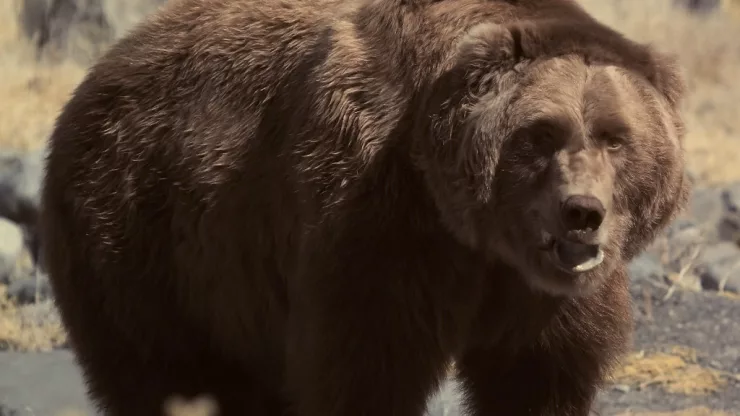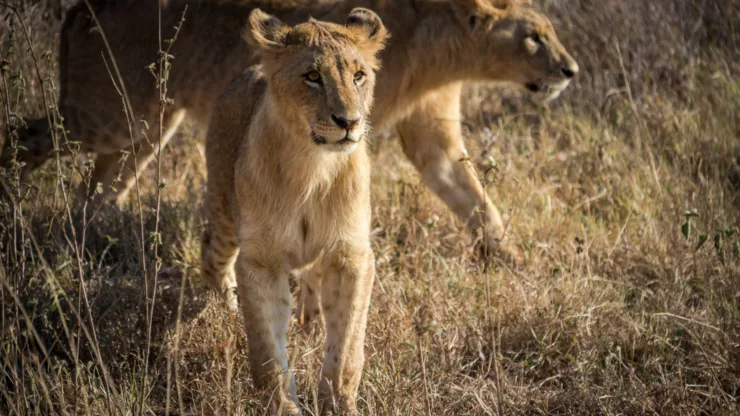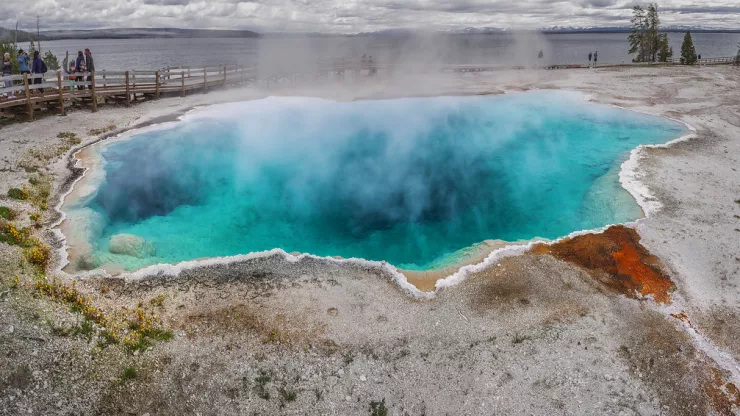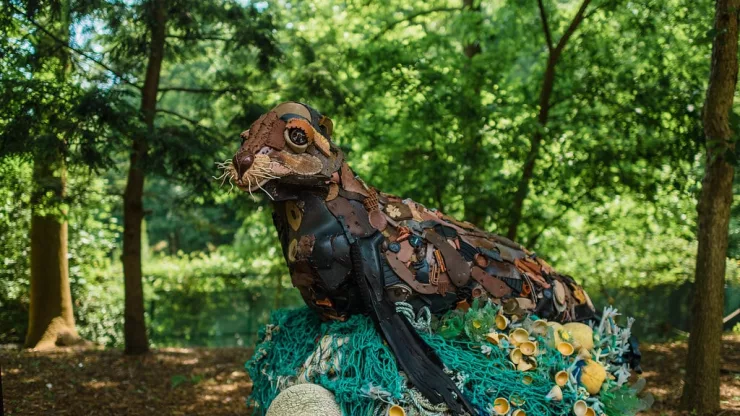Yellowstone National Park, located in the United States, is home to an impressive array of wildlife.
This is a place where you can spot grizzly bears, wolves, elk, bison, and much more.
Whether you’re an experienced wildlife enthusiast or just a casual observer, Yellowstone provides an excellent opportunity to learn about and observe animals in their natural habitats.
In this guide, we will explore the amazing wildlife of Yellowstone and provide some tips to help you make the most of your visit.
Jump to Section
The Most Impressive Animals to Spot in Yellowstone
Yellowstone is home to a wide variety of animals, but some are more impressive and easier to spot than others.
Here are some of the top animals to keep an eye out for:
| Animal | Description |
|---|---|
| Grizzly Bear | The powerful grizzly bear is one of the most iconic animals in Yellowstone. These bears can weigh up to 600 pounds and are known for their distinctive hump on their shoulders. |
| Grey Wolf | Yellowstone is one of the few places in the United States where you can spot wolves in the wild. These powerful predators are known for their piercing howl and hunting skills. |
| Elk | Elk are abundant in Yellowstone and can be seen grazing in meadows or wandering through the forests. Male elk have large antlers which they use to impress females during mating season. |
| Bison | The massive bison is the largest land mammal in North America and can weigh over 2,000 pounds. Bison can be seen roaming the grasslands of Yellowstone in large herds. |
Tips and Tricks for Wildlife Watching in Yellowstone
Watching wildlife in Yellowstone can be a thrilling experience, but it’s important to do so responsibly and safely.
Here are some tips to help you make the most of your wildlife watching experience in Yellowstone:
| Tip | Description |
|---|---|
| Use Binoculars | A good pair of binoculars can help you spot wildlife from a safe distance. |
| Respect Wildlife | Always keep a safe distance from wildlife and never approach them. |
| Stay in Your Vehicle | When driving through the park, stay in your vehicle to avoid disturbing animals or getting too close. |
| Be Patient | Wildlife watching can take time, so be patient and keep your eyes peeled for any signs of movement or activity. |
Protecting Yellowstone’s Wildlife: What You Need to Know
Yellowstone’s wildlife is fragile and needs to be protected. Here are some things you can do to help preserve the park’s wildlife:
| Action | Description |
|---|---|
| Follow Park Rules | Always follow park rules and regulations, including speed limits and designated viewing areas. |
| Leave No Trace | Pack out all your trash and leave the park as you found it. |
| Don’t Feed Wildlife | Feeding wildlife can be dangerous and unhealthy for animals, so never feed them. |
| Support Conservation Efforts | Consider donating to conservation efforts or supporting organizations that work to protect wildlife in Yellowstone. |
Experiencing the Seasons in Yellowstone
The experience of viewing wildlife in Yellowstone can vary greatly depending on the season.
Each time of year offers its unique encounters and sightings:
Spring
Spring is a season of new life in Yellowstone.
This is when many animals have their young, and you may see newborn calves and cubs venturing out with their mothers.
Bears emerge from hibernation and can often be spotted in meadows and along the roadsides.
Summer
Summer brings herds of bison and elk to the lush, green valleys of Yellowstone.
It’s also a great time to spot wolves and grizzly bears, as they tend to roam more widely during this period.
Moreover, this is a perfect time to observe birds, as many species migrate to the park for the summer season.
Fall
During the fall, male elk engage in the rut, or mating season, making this a fascinating time for wildlife watching.
Their bugling echoes through the valleys and forests of Yellowstone, providing an unforgettable experience.
Also, as trees shed their leaves, spotting wildlife against the backdrop of vibrant fall colors can be easier.
Winter
Winter in Yellowstone presents a serene, snowy landscape where animals such as wolves, bison, and elk are easier to spot against the white background.
This is also a time when you may see trumpeter swans and bald eagles along the rivers, which often remain unfrozen even in the coldest months.
Best Places for Wildlife Spotting in Yellowstone
Some areas of the park are particularly known for their wildlife sightings. Here’s a quick guide:
| Location | Wildlife Commonly Seen |
|---|---|
| Lamar Valley | Wolves, grizzly bears, herds of bison and elk, bald eagles |
| Hayden Valley | Bison, grizzly bears, coyotes, various bird species |
| Tower Fall | Black bears, bighorn sheep |
| Geyser Basins | Elk, mule deer, coyotes |
| Madison River | Elk, bison, mule deer, bald eagles |
In conclusion, Yellowstone National Park offers abundant opportunities to observe a diverse array of wildlife.
Being mindful of your actions, respecting the wildlife, and adhering to park rules can ensure that your visit is both enjoyable and respectful to the natural environment.
With patience, keen observation, and a bit of luck, you’re sure to have a memorable wildlife experience in this remarkable natural sanctuary.
FAQ
What is the best time of year to see wildlife in Yellowstone?
The best time to see wildlife in Yellowstone is during the spring and fall when animals are most active.
However, you can spot wildlife throughout the year, so keep your eyes peeled no matter when you visit.
Is it safe to view wildlife in Yellowstone?
While wildlife watching can be exciting, it’s important to remember that these animals are wild and unpredictable.
Always keep a safe distance and follow park regulations to ensure your safety and the safety of the animals.
Can I touch or feed the animals in Yellowstone?
No, it is illegal and dangerous to touch or feed wildlife in Yellowstone. Feeding animals can cause them to become aggressive and dependent on humans for food.
What should I do if I encounter a bear or other dangerous animal?
If you encounter a bear or other dangerous animal, stay calm and keep a safe distance. Don’t run or make sudden movements.
Make noise to alert the animal of your presence and slowly back away.
What should I do if I see someone harassing wildlife in Yellowstone?
If you see someone harassing wildlife in Yellowstone, report it to a park ranger immediately. Harassment of wildlife is illegal and can result in serious fines and penalties.
How can I help protect Yellowstone’s wildlife?
You can help protect Yellowstone’s wildlife by following park rules and regulations, leaving no trace, not feeding wildlife, and supporting conservation organizations.
Educating others about the importance of wildlife protection is also essential.
I’m a nature enthusiast and creator of Metro Wilds and have spent years exploring the great outdoors.
With a passion for environmental conservation and sustainability, I have dedicated my career to writing about the beauty and wonders of nature, as well as the threats facing our planet.
Contact me at [email protected] for assistance.





